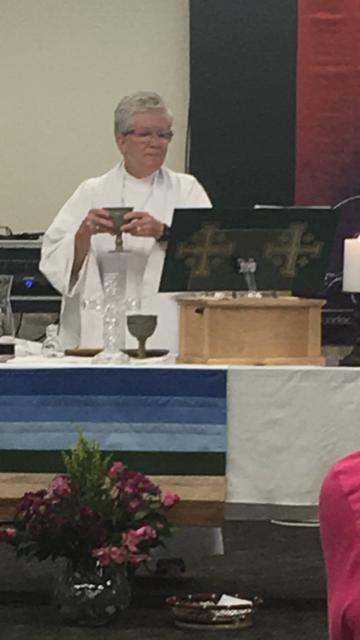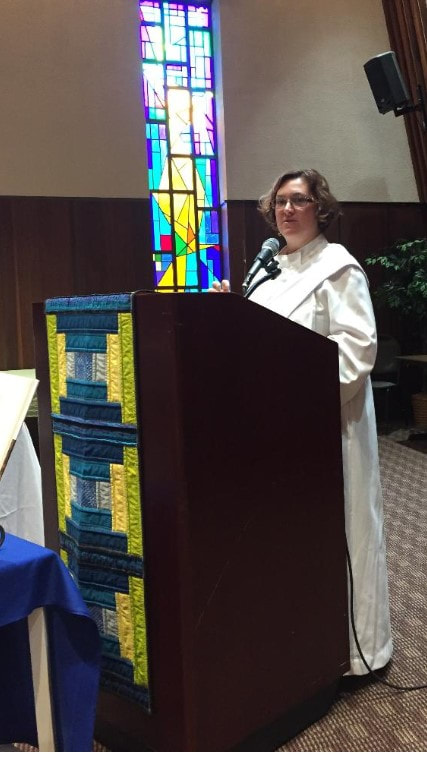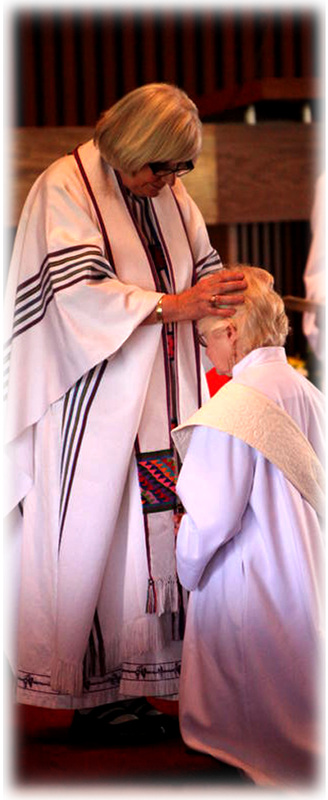 Continuing the Work of the Christ April 7, 2024, 2nd Sunday of Easter Helen Weber-McReynolds Readings: Acts 1:3-5, 12-14, 15; Ps.118; 1 John 1:1-4; 3:11, 14, 16; John 20:1, 11-18 Let’s try to picture one hundred-twenty followers of Jesus gathered together in Jerusalem, including Mary, his mother, and his siblings. Our first reading tells us they were gathered “with one heart,” in prayer, waiting for the promise of Jesus, that they would be baptized with the Holy Spirit. I can imagine that they were filled with a huge mixture of emotions. They were probably elated that Jesus’ spirit was still vital and alive in their midst. But they were scared as well. How could they not be? Their leader had just been brutally executed, by an empire that had previously crucified thousands. They no doubt feared they could be next. Yet they were encouraged by the unity they felt. I imagine that they reminisced about all Jesus’ teachings and the beautiful way he had related to people, going out of his way to approach the marginalized. I imagine that together, they felt grief, and amazement, fear, and great joy, uncertainty, and solidarity. I assume Mary Magdalene was there too. I can hear her repeating her experience to each of them, how Jesus’ message was loud and clear to her: Don’t cling to the human memory you have of me. Instead, let everyone know that I can live forever through you, through all of you. Remember my example and do as I did. We might wonder why Mary Magdalene was the first to whom Jesus appeared alive. It is clearly documented that she was the first in the gospels of both John and Mark. We can also get some hints from reading the non-canonical gospels of Mary Magdalene and Phillip. These documents tells us that she was “first among the apostles” even when they were all alive, for one reason: she best understood Jesus’ message and was best able to actualize it in her own life. Her position of leadership was earned, and Jesus validated this specifically. Mary Magdalene is our namesake because, of all the apostles, she was the first and most capable follower and teacher of Jesus’ Way. I think they probably asked themselves and one another the question of what exactly had happened to Jesus? The sense of his presence was strong, and he it certainly felt to them as if he was alive. Yet they had witnessed him on that cross. We know the gospels are not historical documents. They often compress time for the sake of conveying their message. When I think of the disciples all gathered, the first beginnings of the early church, I think they probably had to work these ideas out slowly in their minds, not in a few days, but over weeks and months and years. I see them talking all through the night, trying to remember all of what Jesus had said and what they should do to make sure his message also lived on. I picture many of them coming to the conclusion, one after another, that Jesus had chosen them to keep God’s creative mercy and compassion alive. That it was up to them to spread the Good News that love can defeat cruelty, corruption, judgementalism, prejudice, and greed, just as Jesus had said. So I’m betting the disciples had to grow into these decisions, some quickly, some little by little. The way I picture it, Mary Magdalene and the other apostles had a big influence on the others, testifying about how strong Jesus’ commitment and single-minded love had affected them. So I don’t think it is surprising that we continue to grow into our faith in Jesus’ resurrection also. We listen to the Easter Gospel accounts and celebrate joyfully that He is Risen. But then, like the disciples gathered in Jerusalem, we have to figure out what we should do. There is so much wrong in our world. It is easy to get cynical about our ability to effect any important changes. Yet we have all witnessed, at some time or another, impressive unselfishness and courageous witness to justice that actually has made a difference. The bravery of the aid workers trying to help in Ukraine and Gaza right now is an example. So we know that there is strength in numbers, and that if we work together, it is possible to continue building the Reign of God right where we are. Our second reading reminded us so beautifully: “For this is the message we have heard from the beginning: We should love one another. We know that we, too, have passed from death to life because we love one another. God is love. Whoever lives in love lives in God, and God in them.” Let us continue working to grow into how our actions can keep the Christ alive. * It is important to note that the verses Act 1: 13-14 are only included in the canonical Catholic lectionary every 3 yrs., and for the 7th Sunday of Easter, the readings for which are usually replaced by those for the Ascension. John 20:11-18 is not included anywhere in the traditional parish lectionary. So most Catholic parishioners never hear the story of Mary Magdala being the first to greet the resurrected Christ, and the person who transmitted the news of his resurrection to the rest of the disciples. Pope Francis named St. Mary of Magdala an Apostle in 2015. Those disciples had seen how Jesus lived his mission – never focusing on sin, but drawing forth each person's greatest potential. That was now their call. (McGlone) |
|



 RSS Feed
RSS Feed

